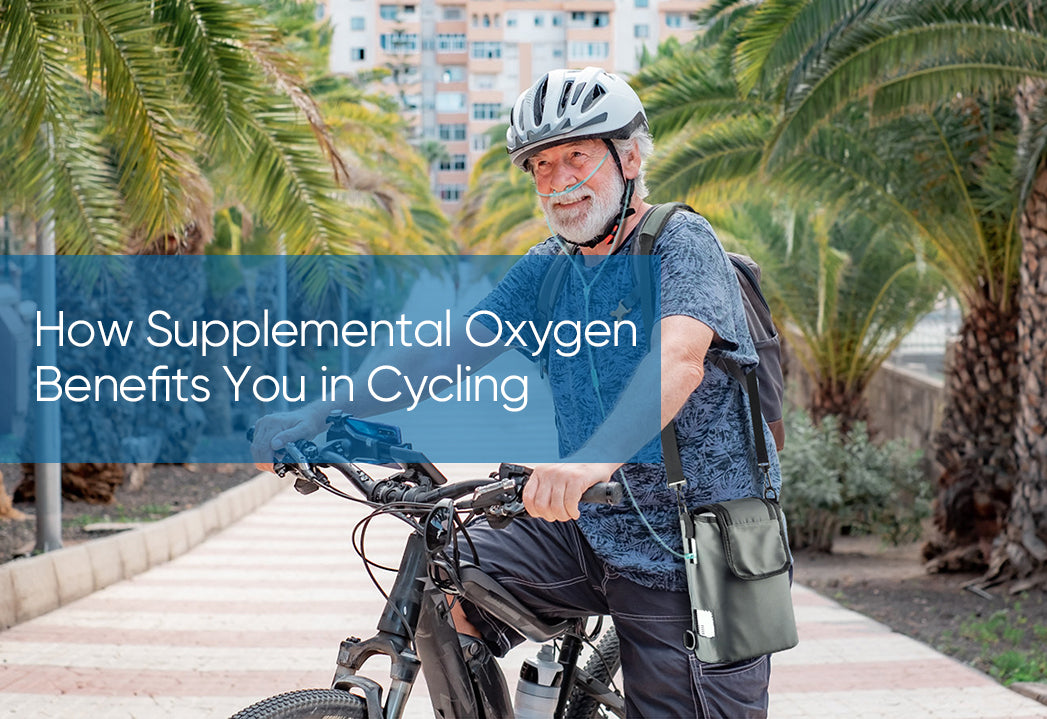
How Supplemental Oxygen Benefits You in Cycling
Oxygen is essential to our body, it is needed to power our organs, brain, and every cell. Sports activities require even more oxygen, especially aerobic sports like cycling. We take in oxygen from the air, which is normally enough to meet our needs. But we can always spot athletes wearing oxygen masks during or after a match for supplemental oxygen. So how does that help them?
Aerobic sport is called by this name because it uses oxygen to generate the energy we need. The process is called Oxidative phosphorylation, in which ATP (adenosine triphosphate - the only molecule that powers our cells) is produced with the help of oxygen and energy generated by the digestion and metabolism of carbohydrates, fat, or protein. During cycling, we breathe heavily to provide sufficient oxygen for oxidative phosphorylation so that our effort can be sustained. In an ideal case, you ride at an intensity in which you’re able to take in more oxygen than you need so you can sustain for a decent amount of time. However, if your workload is too excessive and your breathing can not take in enough oxygen, you are about to go through the following phases. Since oxygen is no longer available for energy generation, your body will temporarily switch to anaerobic respiration, including the Phosphagen system and glycolytic system that does not require oxygen to produce energy. These two systems provide bursting energy but can’t last long due to the limited reserves of involved substances in muscle fibers. Besides, they transform glycogen into lactic acid, which causes cramping and muscle fatigue if accumulated, affecting your performance. Meanwhile, your heart rate rises rapidly and approximates its max. All these indicate you have been stretched to the limit and can no longer continue. Under this circumstance, only supplemental oxygen can save the day. With more oxygen introduced, the blood can inhibit the production of lactic acid and expel any already produced. Your heart rate will also drop because it no longer needs to struggle to pump oxygen-starved blood to your body. Certainly, it's a much better choice to use supplemental energy before caught in a tight corner, so that you can keep a rather easy aerobic riding and save the anaerobic energy source for the final sprint.
Another way supplemental oxygen can improve your performance is through its influence on VO2 max. VO2 max is the measurement of the maximum rate at which your body can utilize oxygen during exercise. It’s a good reflection of the cardiovascular status and aerobic capability of an athlete. The higher your VO2 max is, the more effective can your body utilize oxygen to produce energy, and the less likely you will switch to anaerobic respiration. VO2 is usually decided by cardiac output and muscle oxygenation capacity. It doesn’t have much to do with the amount of oxygen you take in. If you breathe in more oxygen than you can utilize, the excess is wasted. So, how can supplemental oxygen help with VO2? It is worth mentioning that supplemental oxygen does not only mean more oxygen but oxygen of high concentration. Just like pressured water or compressed air can pass a filter more efficiently, high-concentration oxygen can get into your blood more easily, increasing oxygen levels in your body. With boosted VO2, oxygen is more efficiently delivered and utilized by your body, maintaining your blood oxygen saturation so that you can recover to aerobic breathing faster and feel less fatigued in your riding.
Supplemental oxygen also improves your mental state. A lot of people haven’t realized the fact that our brain is the most oxygen-needed organ of the body requiring 20% of the oxygen intake. Insufficiency of oxygen does not only result in physical fatigue but mental fatigue as well. It can be quite dangerous in cycling if you can’t keep focusing on the road condition while moving at a high speed. So why not inhale some supplemental oxygen? Only a few breaths is needed to restore your concentration and reduces response time.
Overall, inhaling supplemental oxygen is a good way to provide sufficient oxygen for your increased need during cycling, keeping you energetic and helping you recover fast. It also reduces the risk of accidents and injuries. If you have never cycled with supplemental oxygen before, why not give it a try? You are guaranteed an enhanced performance and a much more pleasant riding experience.












Commentaires
Laisser un commentaire